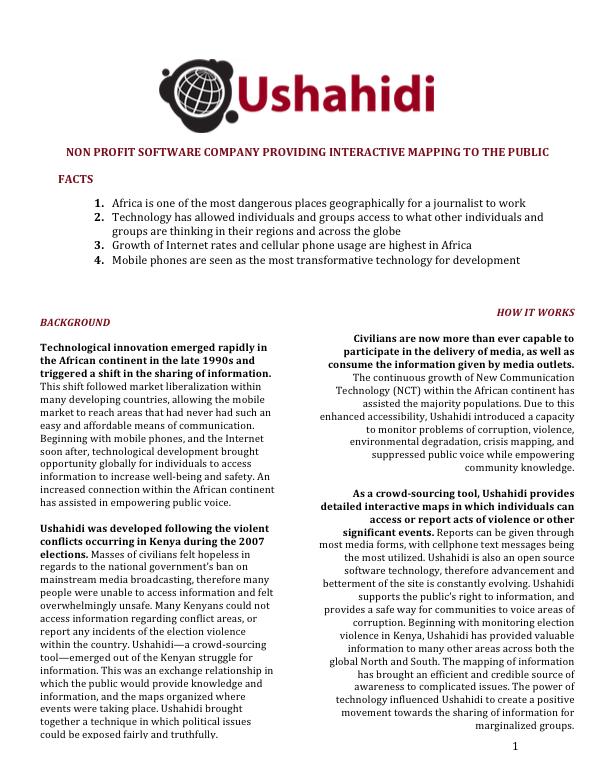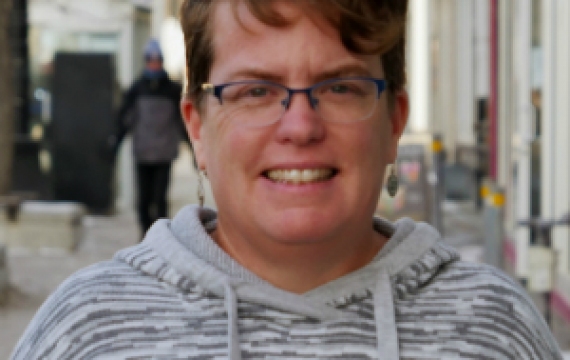
Factsheets created by students in African Development Issues class
Students in the Fall 2014 African Development Issues class ended the year by reflecting on what they learned. Their professor, Dr. Ruth Rempel, asked each of them to choose a topic from the course that they thought was interesting and important. She then asked them to turn that topic into a factsheet—a form of writing that many development organizations use to communicate with the public. This pushed students to translate development concepts and experiences into terms that would communicate outside the university, and to practice organizing information into an effective factsheet. Many of the students picked an example of successful innovation—whether with water storage, mobile phone, use or social policy.
As student Gurpreet Dhillon said, “I knew I wanted to showcase African development in a positive light. For too long the general public has had a negative perception of the African continent.” He noted that when he first heard about sand dams in class “I was blown away.” Christine Izere chose to write about social protection policies to illustrate the increasing role that African governments, rather than external donors, were playing in African development. These are some of the best factsheets submitted, doing what factsheets are supposed to do—informing people about important initiatives in a short, accessible way.
Water. Naturally, safely, and affordably. An innovative project that provides more water, to more people.
Sand dams are a cost-effective method of water collection and are constructed by members of the local community. They are usually built in rural, arid, and semi-arid areas, where infrastructure that allows for accessible water is scarce but rainfall is common.
Click here to download the factsheet
Ushahidi was developed following the violent conflicts occurring in Kenya during the 2007 elections. Many Kenyans could not access information regarding conflict areas, or report any incidents of the election violence within the country.
Ushahidi—a crowd-sourcing tool—provides detailed interactive maps in which individuals can access or report acts of violence or other significant events.
Click here to download the factsheet
Sand dams are considered to be the most cost-effective form of rainwater harvesting, providing communities with a clean, local, reliable source of water, especially during drought periods.
The basic idea of a sand dam is that cleaner water lasts longer, since the water is stored under the sand to protect it from contamination and evaporation.
Click here to download the factsheet
 Social Protection Programs
Social Protection Programs
By Christine Izere
Social protection, as defined by the United Nations Research Institute for Social Development, is concerned with preventing, managing, and overcoming situations that adversely affect people's wellbeing.
This factsheet provides information about two social protection programs: the Tanzania Social Action Fund and the Brazil Zero Hunger Program.
Click here to download the factsheet
 Health Centre by Phone
Health Centre by Phone
By Jessica Piec
Chipatala Cha Pa Foni (which translated into English means 'Health Centre by Phone') is a part of the recent growth of transformative mobile initiatives and projects which aim to support development in the health sector by way of reproductive, maternal, newborn, and child health care in Malawi.
Click here to download the factsheet







